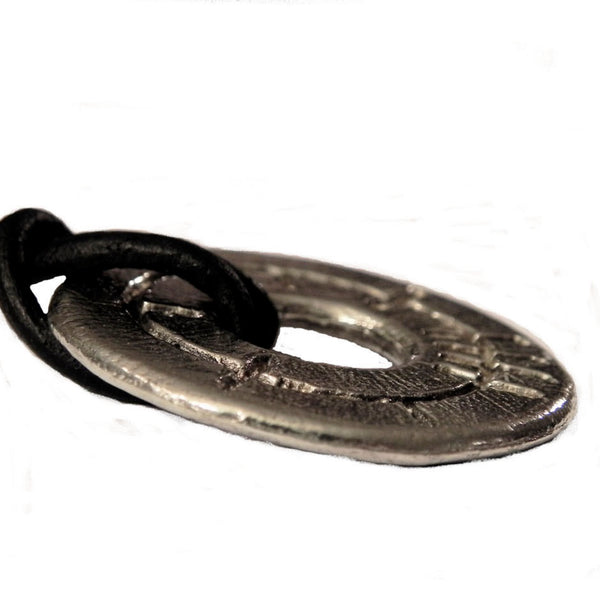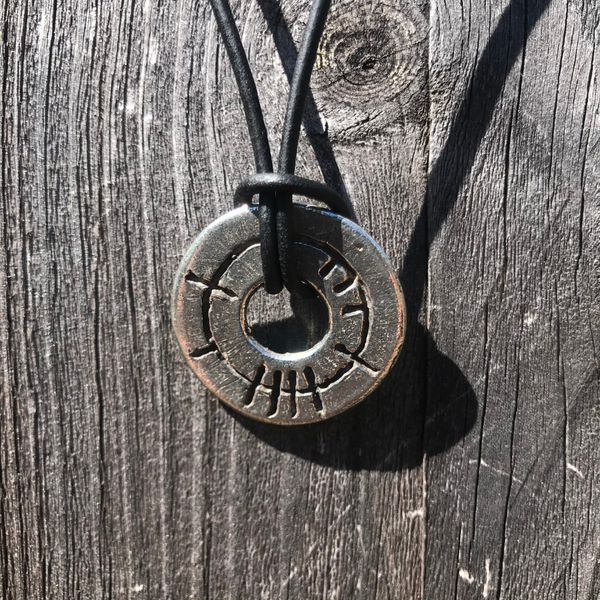Life (Beatha) Pewter Pendant
In admiration of the Buckquoy spindle-whorl, an 8th Century stone circle engraved in Ogham, we have written the Irish word for life - "beatha" - to represent "The Circle of Life".
Made of fine, handcrafted pewter. 1 1/4" diameter on knotted 29" leather string. Packaged in green organza bag with descriptive tag and a 3x5 card explaining the history of the Ogham alphabet.
Our pewter pendants are sculpted to resemble the blemishes and imperfections of stone. The natural process that forms a patina on pewter will occur over time, giving the pendant the intended look of an ancient, weathered Ogham stone. If you prefer to maintain a sheen to your Ogham pewter pendant, please use one of the many simple techniques to polish pewter jewelry such as massaging baking soda onto the moistened pendant and rinsing with warm water.
Ships within 1-3 business days. USPS shipping times are in addition to this handling period.












